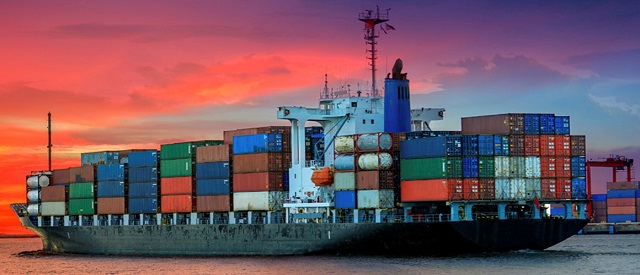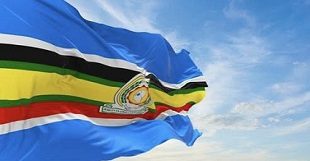
Can the African Continental Free Trade Area succeed where previous free-trade initiatives have failed? Dianna Games weighs up the issues.
Africa heads into a historic year in which the long-awaited African Continental Free Trade Area (AfCFTA) finally becomes a reality, with trading under the scheme scheduled to begin on 1 July. The largest free trade zone to come into being since the launch of the World Trade Organisation in 1995, the AfCFTA is a bold venture, especially on a continent where intra-African trade is languishing at about 18% of total trade. And the political will behind it is unprecedented for a pan-African initiative.
Forty-one countries signed the agreement creating the AfCFTA in March 2018 and the rest came to the party eventually, with only Eritrea yet to sign. Ratification has been slower, with just over half having taken the process through their parliaments. The AfCTA will create a zone covering 1.2bn people with a combined gross domestic product of $2.5 trillion. It contains provisions for countries to reduce tariffs by 90% and address impediments to trade.
As the D-day for trading under the agreement looms, the question is whether, once the hype and political rhetoric is stripped out of the picture, Africa is ready to take this big step into the future. The economic reality on the ground has undermined ambitious political plans in the past.
It is worth remembering that the AfCFTA has not come out of nowhere. Africa is currently covered by a variety of free trade areas and customs unions, some of them overlapping, and this initiative will use existing formations and experiences as the building blocks for the new trade area. It should also provide a template for what has gone wrong.
The spirit of free trade is well represented at public forums across Africa. But policies and actions at a national level tend to paint a different picture, one that is characterised by a failure by leaders to implement the agreements they sign up to once the fanfare has died down.
Why would the continental initiative be different? It is instructive to ask what has happened to the last bold trade initiative signed up to in Africa, albeit with less fanfare: the Tripartite Free Trade Area, which links three regional economic communities and 26 countries from the Cape to Cairo. Launched in 2011 in South Africa and signed in 2015, it still does not have all member states on board and the initiative has drifted. It has been bogged down by outstanding negotiations on key issues such as rules of origin, dispute mechanisms and tariff phasedowns and has missed several deadlines for completion.
The political will behind the AfCTFA, as well as strong support from the African Development Bank and other institutions, may be what marks a departure from the past.
Making free trade work
The challenges are huge. Inefficient bureaucracy and poor infrastructure continue to frustrate the limited trade African countries have among themselves, imposing huge costs on consumers and economies. The barriers are deeply embedded. Persistent non-tariff barriers and other protectionist measures are key among them. Africa is still heavily dependent on traditional export crops and commodities, reducing the scope for mutually beneficial trade. Infrastructure deficits, a lack of manufacturing and value addition to African commodities, little cross-border harmonisation of rules and regulations, and other issues have also dogged the development of trade.
Long delays at road border crossings for cargo trucks and poorly functioning rail systems are ongoing problems in the links between markets. The ink was barely dry on the AfCFTA agreement when a 70km-long queue of trucks formed on the Democratic Republic of Congo side of the Kasumbalesa border crossing with Zambia because of delays in dealing with paperwork. This occurred in spite of both countries being members of the Common Market for Eastern and Southern Africa (Comesa), one of whose aims is the removal of all physical, technical, fiscal and monetary barriers in the region.
The East African Community, regarded as one of Africa’s most successful regional economic communities, has seen trade hampered by competition between member states. According to the East African newspaper in January, Uganda’s trade with Rwanda was “down to a trickle after a year of frosty relations”, Tanzania had “locked out Ugandan timber, sugar and maize” and Kenya was blocking imports of milk from Uganda.
For the free trade area to work optimally there are many technical issues to be worked out. Key among them is putting in place cross-border payment systems to allow countries to trade in their own currencies rather than reverting to international payment systems. The African Development Bank is working on this in collaboration with central banks and commercial institutions.
Business has been urged to take the lead, not only in expanding investment but also pulling along small and even informal businesses, which currently represent about 40% of total trade in Africa. There has been a call for companies to play a leading role in crafting any new legislation and regulation that will underpin trading to ensure it is not a deterrent to increasing trade. Typically, officials take control of these processes, marginalising business even though it is companies and not governments that trade.
The free movement of people is another sticking point. Many countries maintain visa restrictions for African travellers and levels of protectionism are growing in some countries as governments face the challenge of creating jobs, making it harder to secure work permits.
A core issue is the different levels of development of countries. Many have little to trade outside commodities and countries with an already strong industrial base, such as South Africa, Egypt and Kenya, will benefit most, certainly in the short to medium term. But there is hope that eventually a rising tide will lift all boats.
Africa’s opportunity
It is easy to be cynical, given the history. But this may be the best chance Africa has of building a more resilient continent as fears mount about the growing divide with developed nations and even other emerging regions. And there are some green shoots. The Intra-African Trade Fair in Cairo in December 2018 recorded business transactions worth $30bn – above the targeted $25bn. This indicates a growing appetite for intra-African trade.
And the strong political will shown towards the initiative may mean that peers and champions of the AfCFTA keep an eye on laggards. Let trading begin.
****
Adapted from African Business Magazine
 The Independent Uganda: You get the Truth we Pay the Price
The Independent Uganda: You get the Truth we Pay the Price


